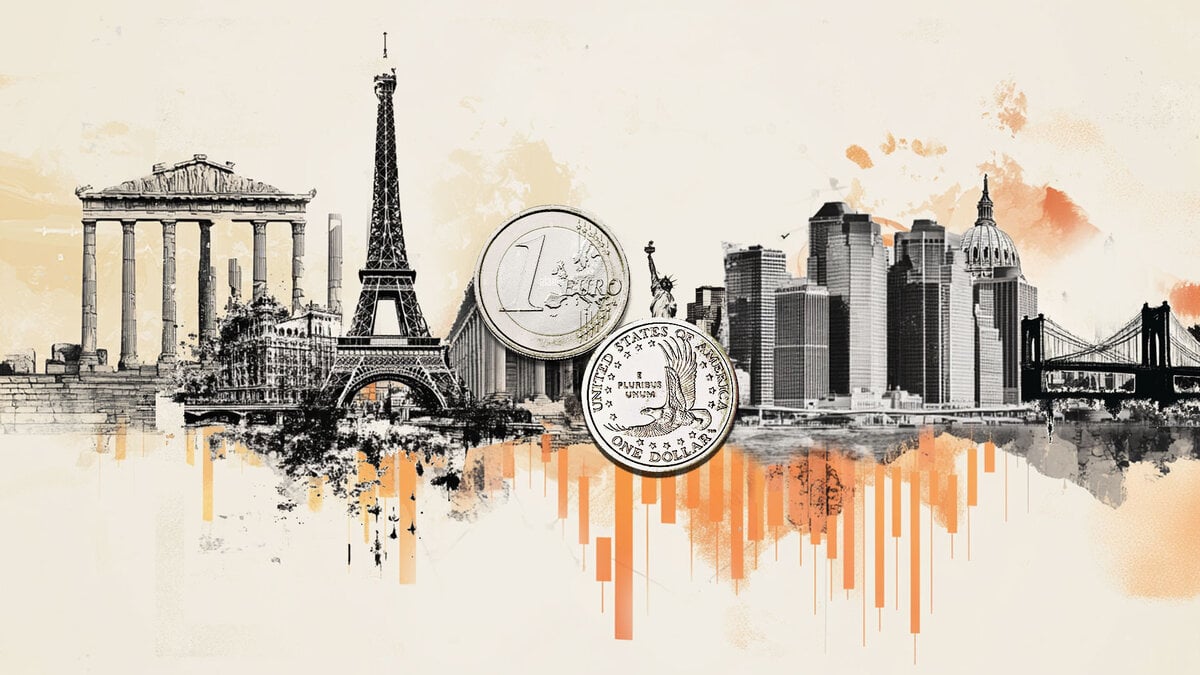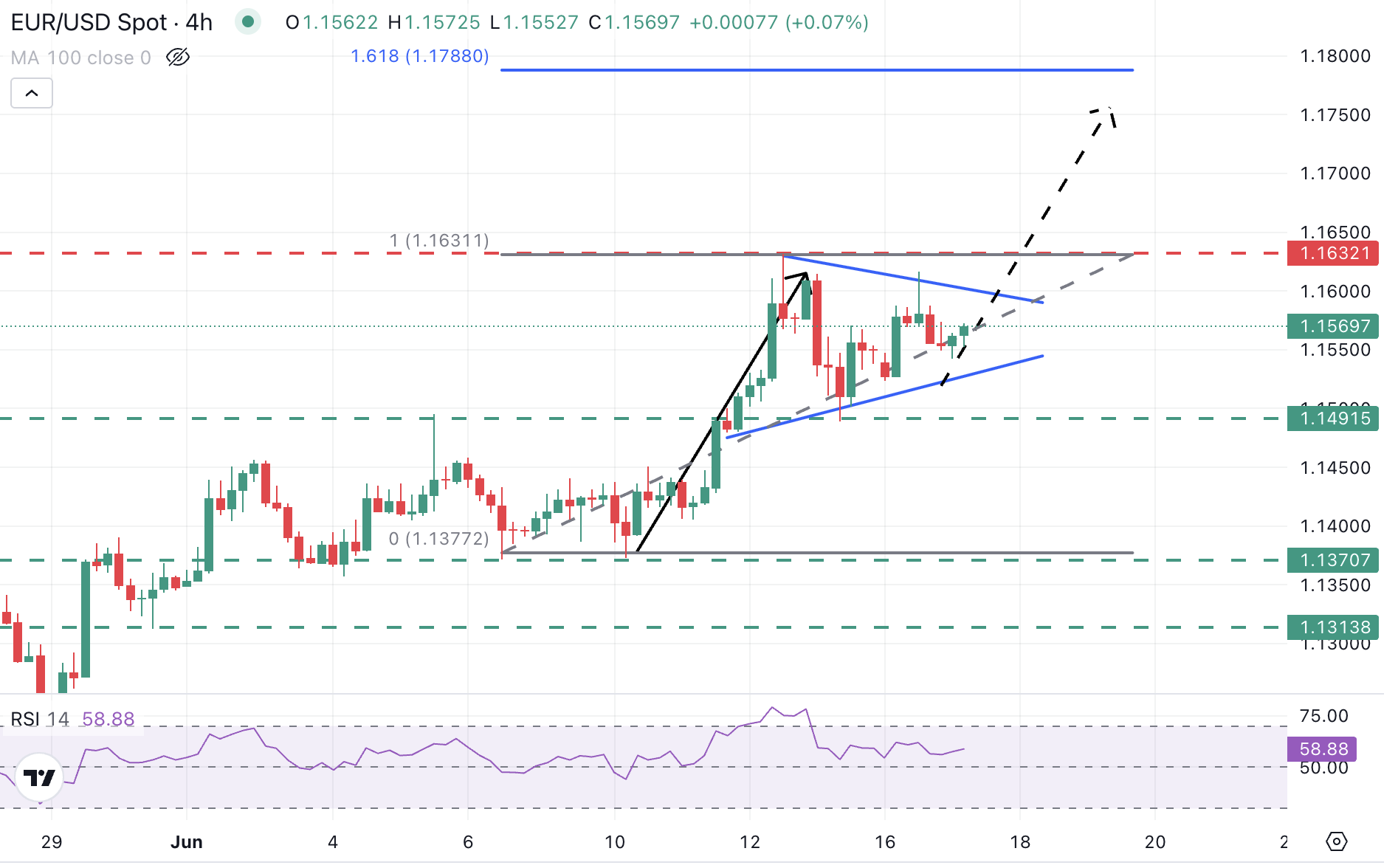Created
: 2025.06.17














![]() 2025.06.17 16:29
2025.06.17 16:29
The EUR/USD pair is trading practically flat, halfway through the 1.1500 range on Tuesday. Waning hopes of a truce in the Middle East have dampened risk appetite, but market volatility remains contained so far as investors await a slew of monetary policy decisions, including the Federal Reserve's (Fed) later this week.
Israel and Iran have continued exchanging fire for the fifth day, and US President Donald Trump has urged citizens to evacuate Tehran, before leaving the G7 summit one day earlier to meet with the National Security Council. Concerns that the US might get involved in the conflict have boosted risk aversion.
Nevertheless, market moves remain limited so far, with investors looking from the sidelines ahead of US Retail Sales data, due later on Tuesday, and the outcome of the Fed's monetary policy meeting, on Wednesday.
The US central bank is widely expected to leave rates unchanged, but investors will be particularly attentive to the summary of economic projections and potential variations in the dot plot to asses the path of interest rates in the near term.

EUR/USD has been moving within an ever-tightening range since peaking above 1.1600 last week, forming a small triangle. Technical studies say that this is a continuation pattern, suggesting a bullish outcome.
The top of the triangle, now around 1.1600, is likely to hold bulls ahead of the June 12 high at 1.1630. Above here, the 1.1700 psychological level might attract sellers. The triangle pattern's measured target is at 1.1750.
On the downside, the triangle bottom is at 1.1525 ahead of the June 13 low at around 1.1490. Below here, the bullish trend would be called into question, with pressure increasing towards 1.1370 (June 6 and 10 lows).
In the world of financial jargon the two widely used terms "risk-on" and "risk off'' refer to the level of risk that investors are willing to stomach during the period referenced. In a "risk-on" market, investors are optimistic about the future and more willing to buy risky assets. In a "risk-off" market investors start to 'play it safe' because they are worried about the future, and therefore buy less risky assets that are more certain of bringing a return, even if it is relatively modest.
Typically, during periods of "risk-on", stock markets will rise, most commodities - except Gold - will also gain in value, since they benefit from a positive growth outlook. The currencies of nations that are heavy commodity exporters strengthen because of increased demand, and Cryptocurrencies rise. In a "risk-off" market, Bonds go up - especially major government Bonds - Gold shines, and safe-haven currencies such as the Japanese Yen, Swiss Franc and US Dollar all benefit.
The Australian Dollar (AUD), the Canadian Dollar (CAD), the New Zealand Dollar (NZD) and minor FX like the Ruble (RUB) and the South African Rand (ZAR), all tend to rise in markets that are "risk-on". This is because the economies of these currencies are heavily reliant on commodity exports for growth, and commodities tend to rise in price during risk-on periods. This is because investors foresee greater demand for raw materials in the future due to heightened economic activity.
The major currencies that tend to rise during periods of "risk-off" are the US Dollar (USD), the Japanese Yen (JPY) and the Swiss Franc (CHF). The US Dollar, because it is the world's reserve currency, and because in times of crisis investors buy US government debt, which is seen as safe because the largest economy in the world is unlikely to default. The Yen, from increased demand for Japanese government bonds, because a high proportion are held by domestic investors who are unlikely to dump them - even in a crisis. The Swiss Franc, because strict Swiss banking laws offer investors enhanced capital protection.
![]()
Created
: 2025.06.17
![]()
Last updated
: 2025.06.17

FXStreet is a forex information website, delivering market analysis and news articles 24/7.
It features a number of articles contributed by well-known analysts, in addition to the ones by its editorial team.
Founded in 2000 by Francesc Riverola, a Spanish economist, it has grown to become a world-renowned information website.
We hope you find this article useful. Any comments or suggestions will be greatly appreciated.
We are also looking for writers with extensive experience in forex and crypto to join us.
please contact us at [email protected].
Disclaimer:
All information and content provided on this website is provided for informational purposes only and is not intended to solicit any investment. Although all efforts are made in order to ensure that the information is correct, no guarantee is provided for the accuracy of any content on this website. Any decision made shall be the responsibility of the investor and Myforex does not take any responsibility whatsoever regarding the use of any information provided herein.
The content provided on this website belongs to Myforex and, where stated, the relevant licensors. All rights are reserved by Myforex and the relevant licensors, and no content of this website, whether in full or in part, shall be copied or displayed elsewhere without the explicit written permission of the relevant copyright holder. If you wish to use any part of the content provided on this website, please ensure that you contact Myforex.
Myforex uses cookies to improve the convenience and functionality of this website. This website may include cookies not only by us but also by third parties (advertisers, log analysts, etc.) for the purpose of tracking the activities of users. Cookie policy